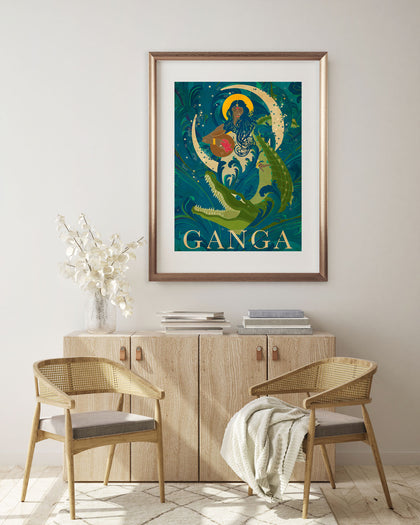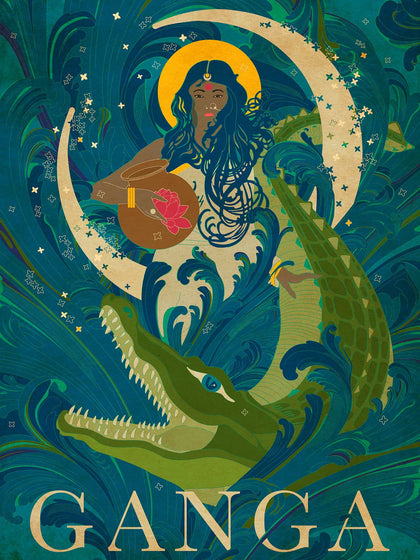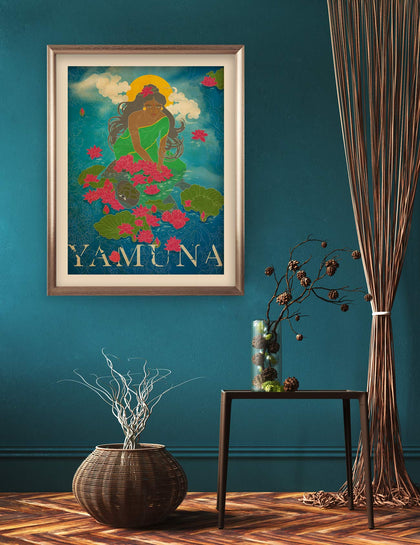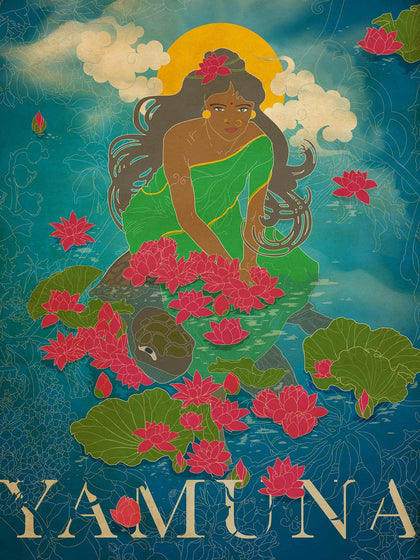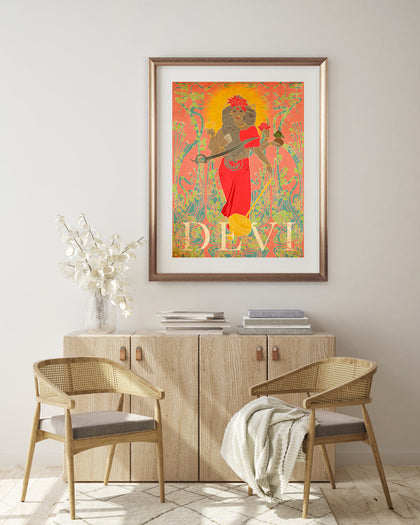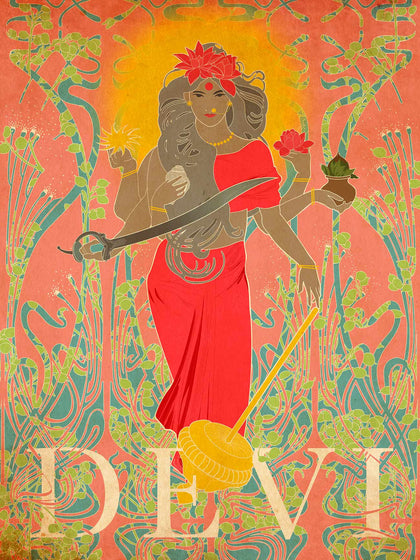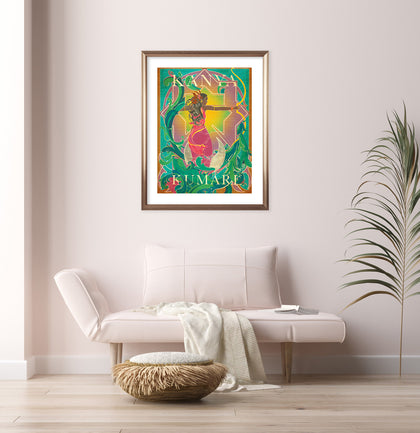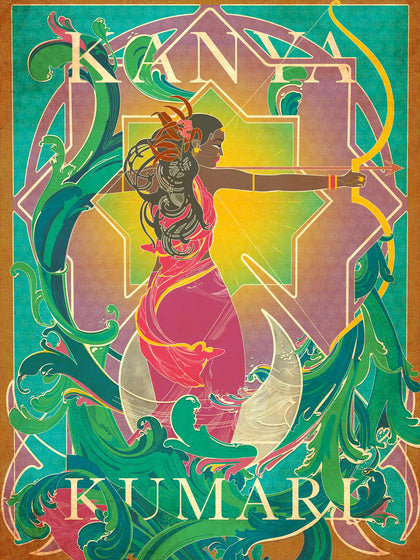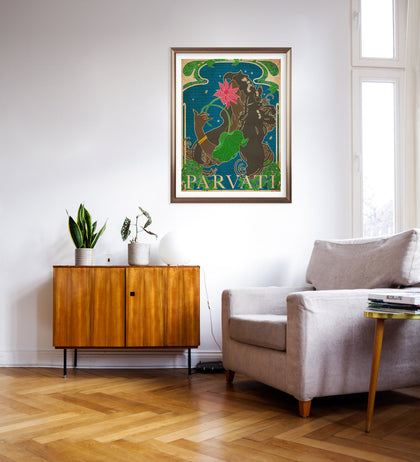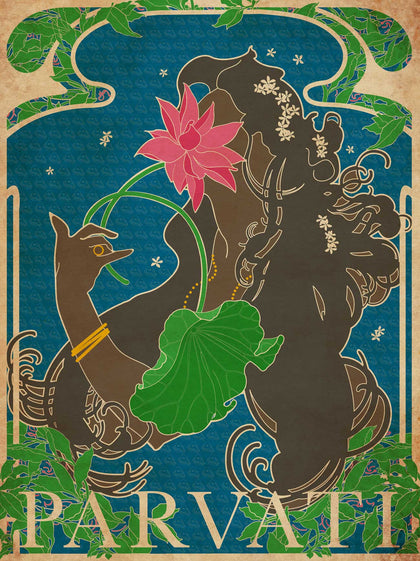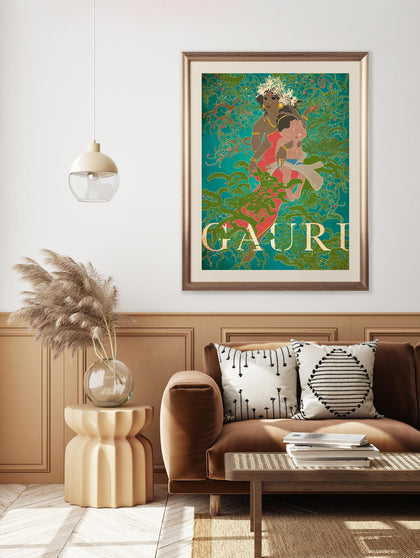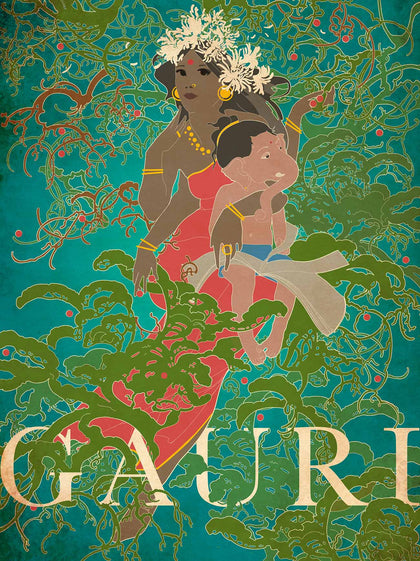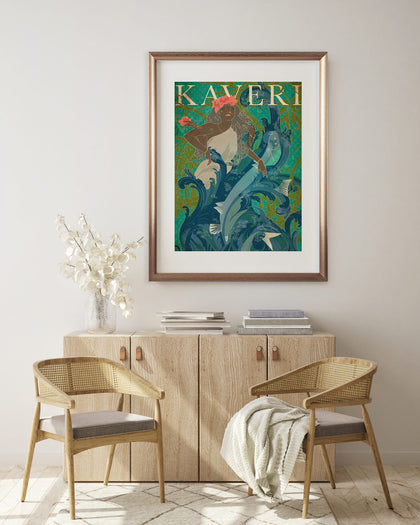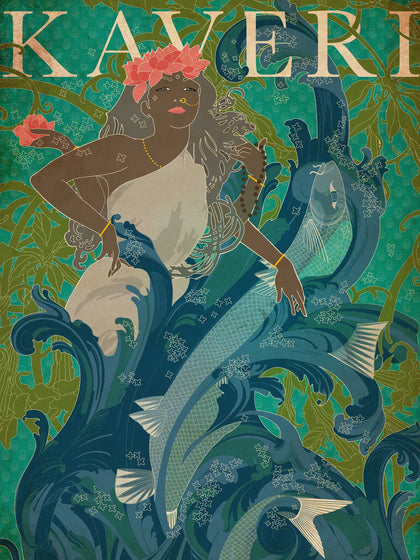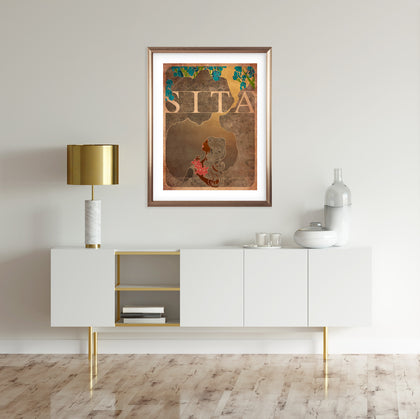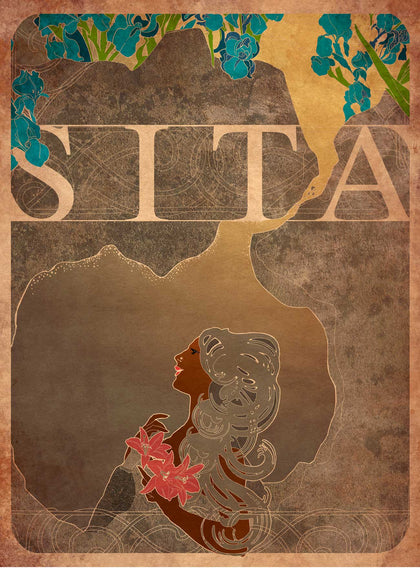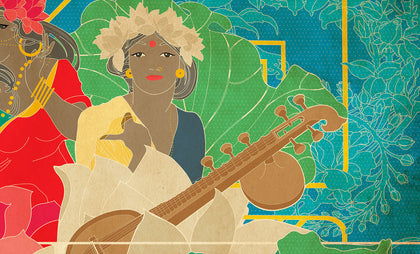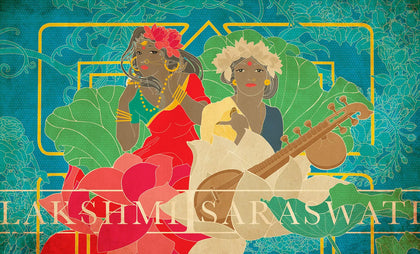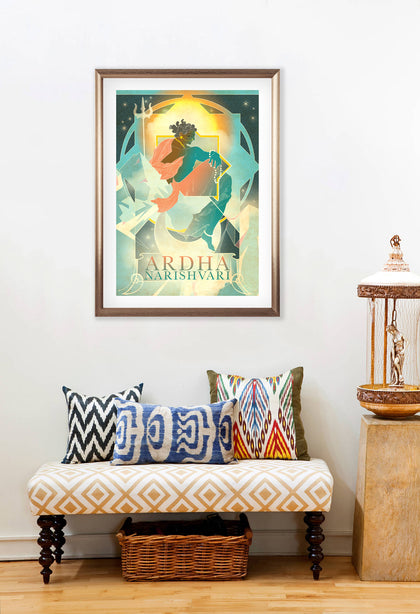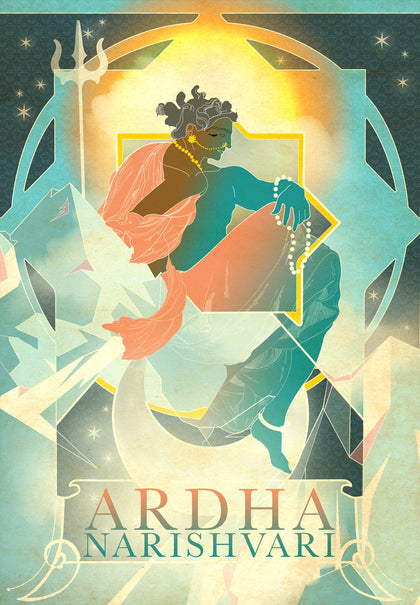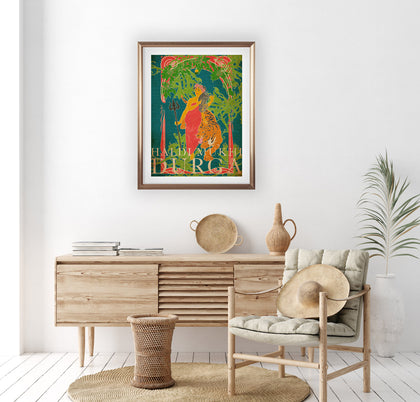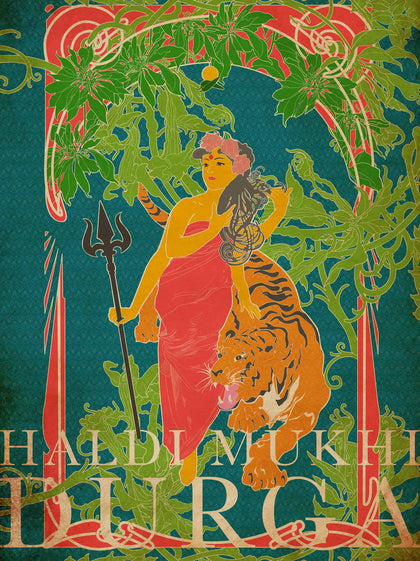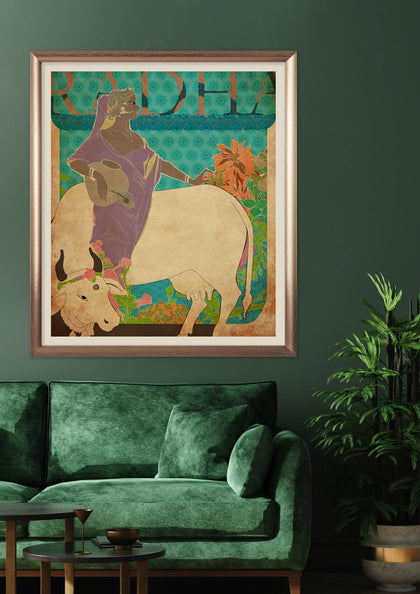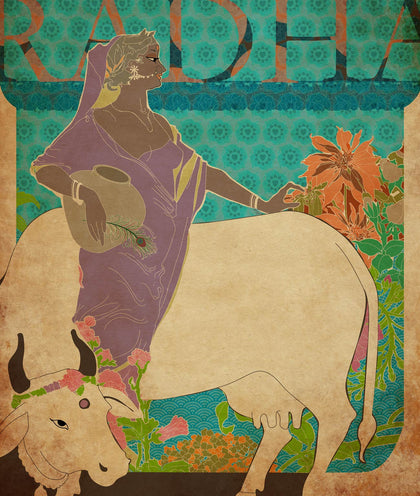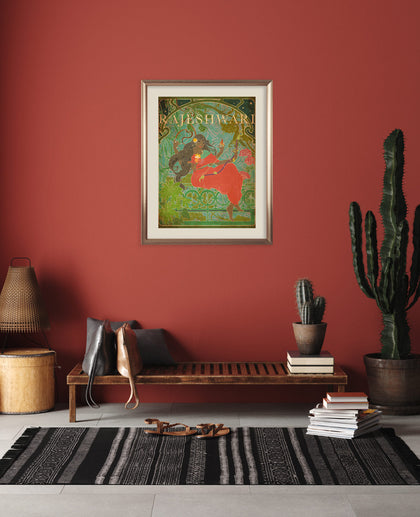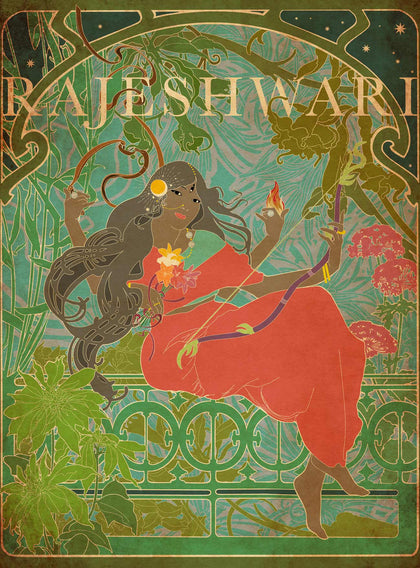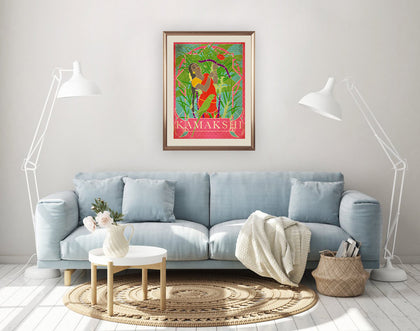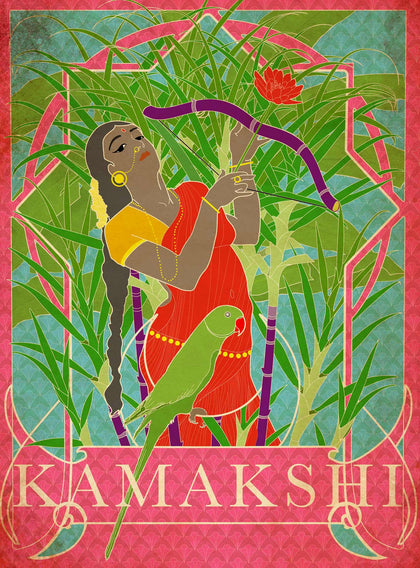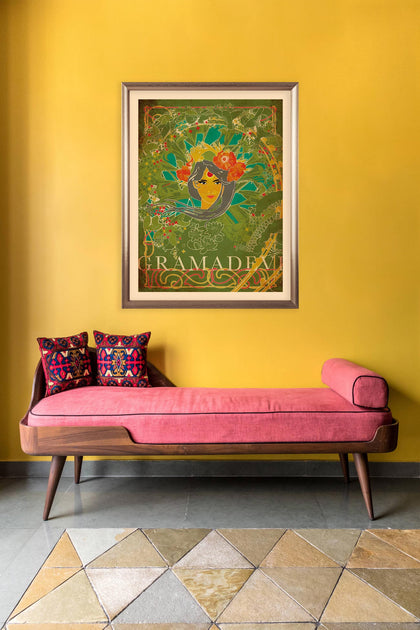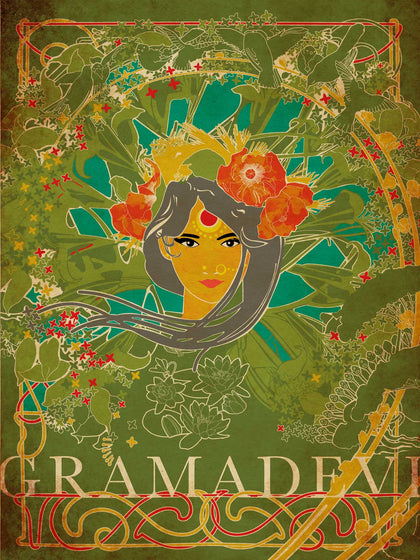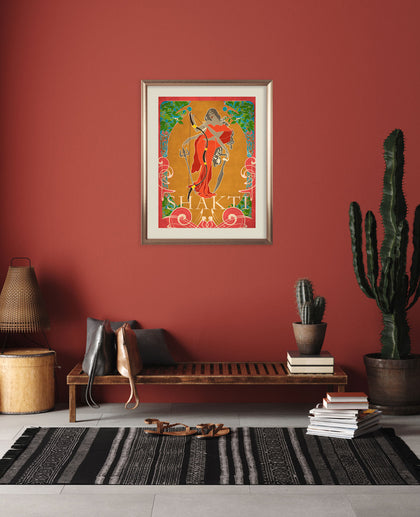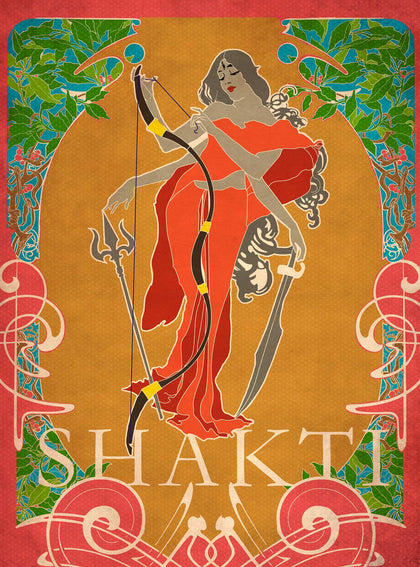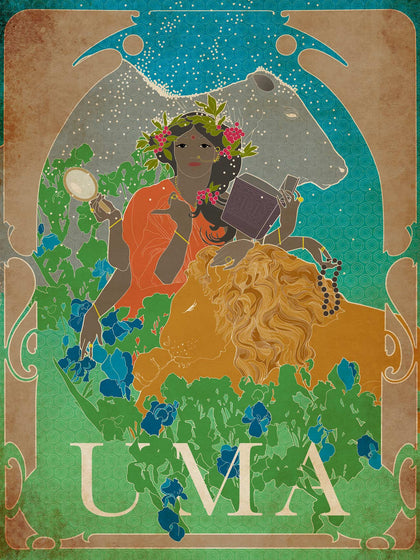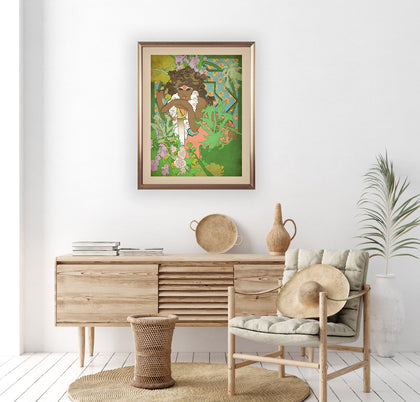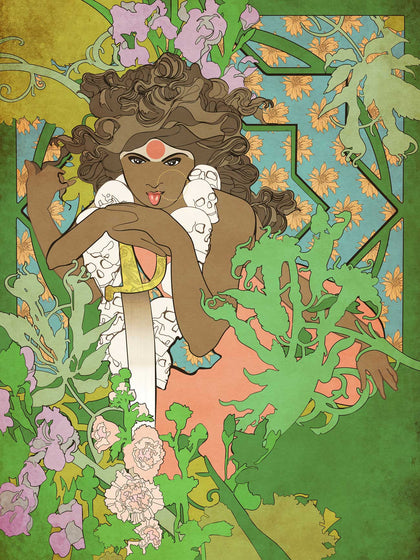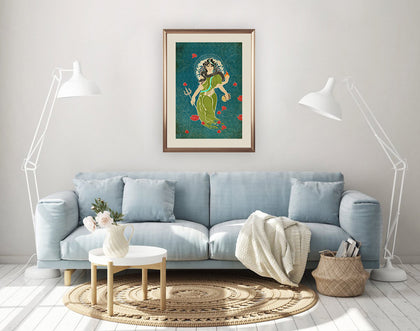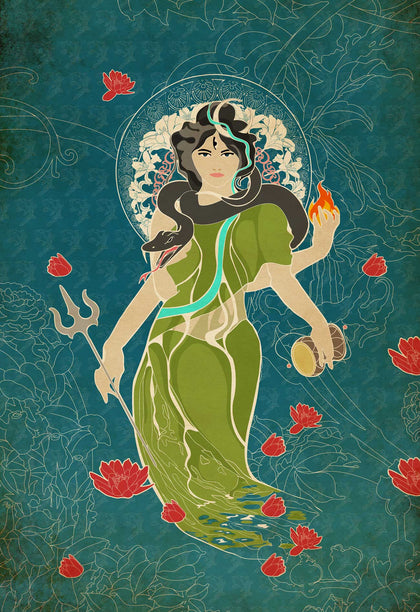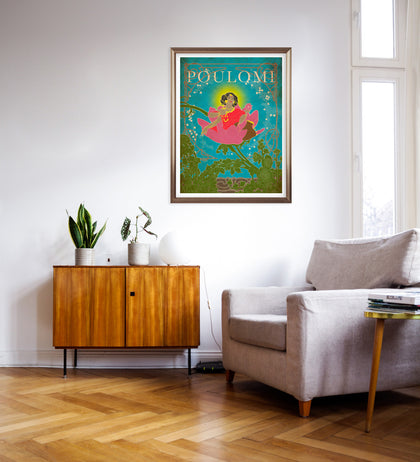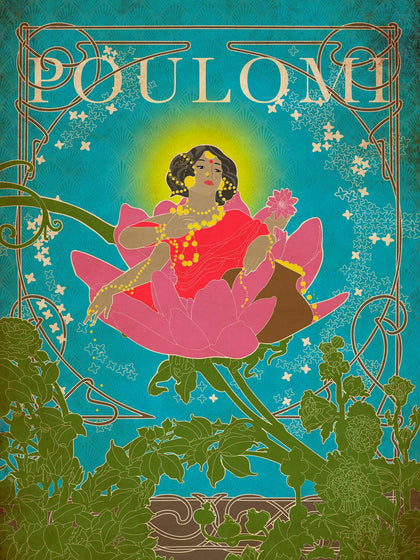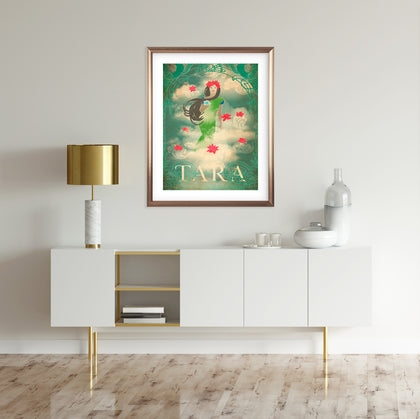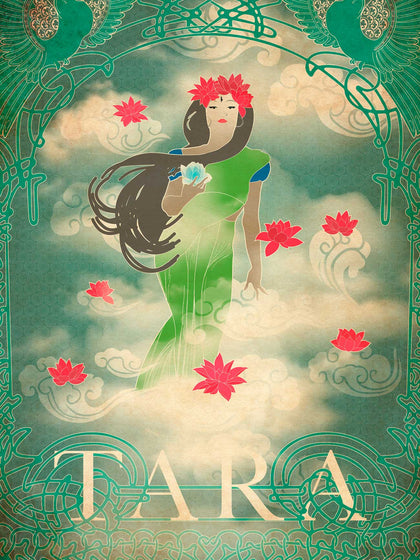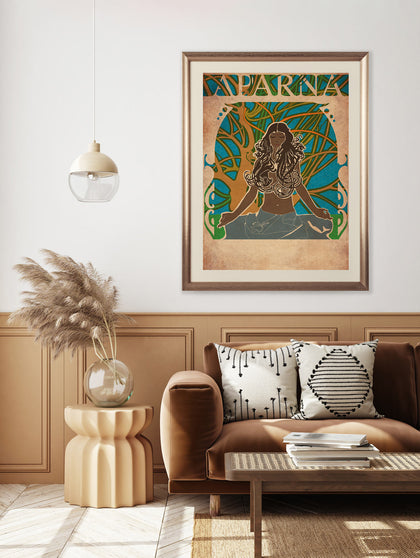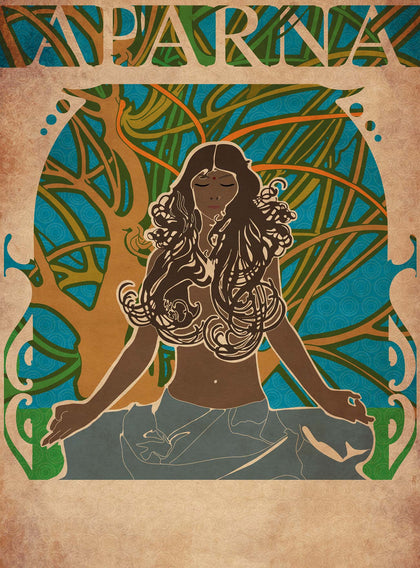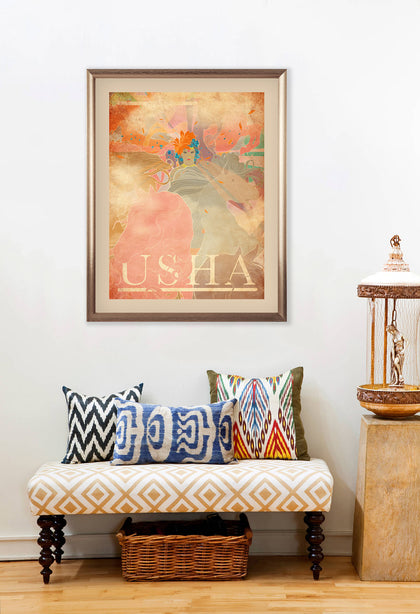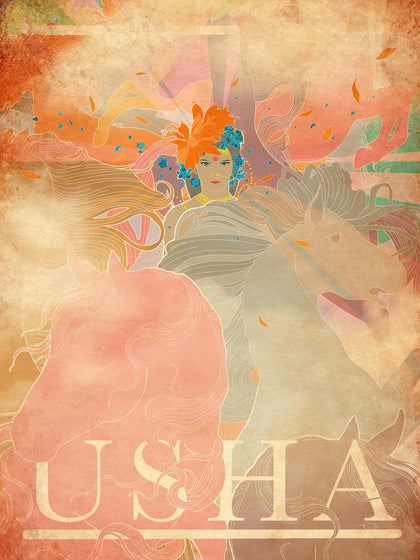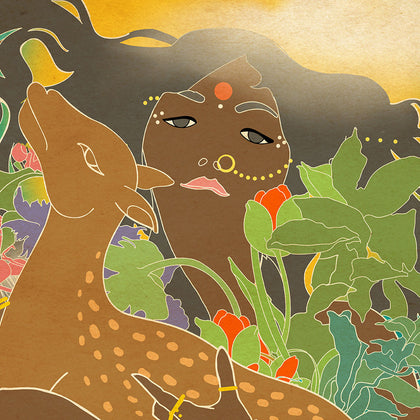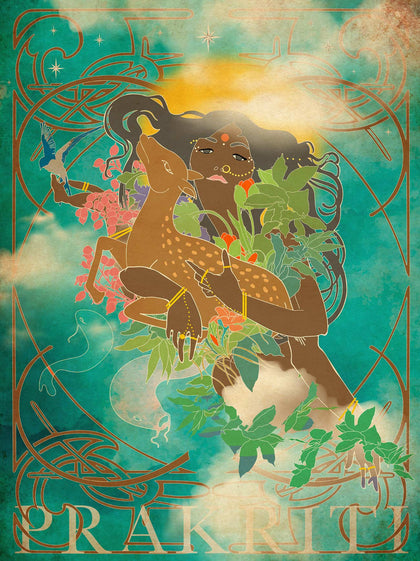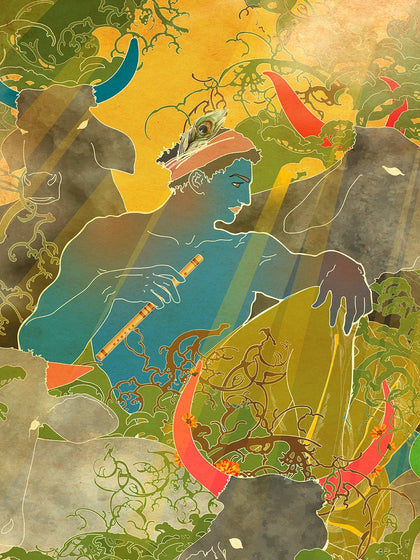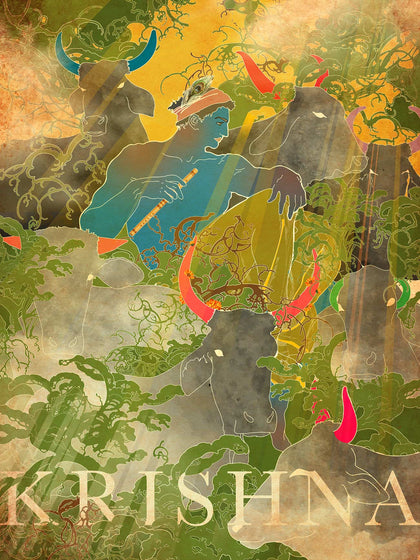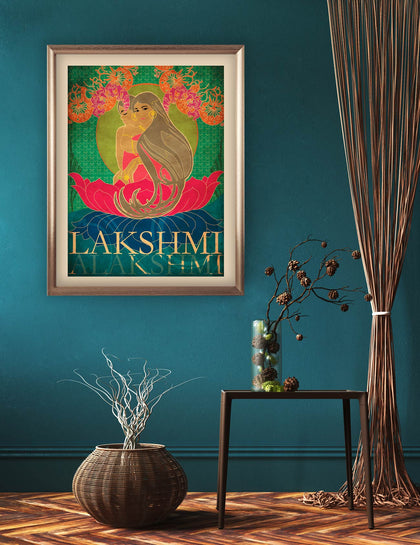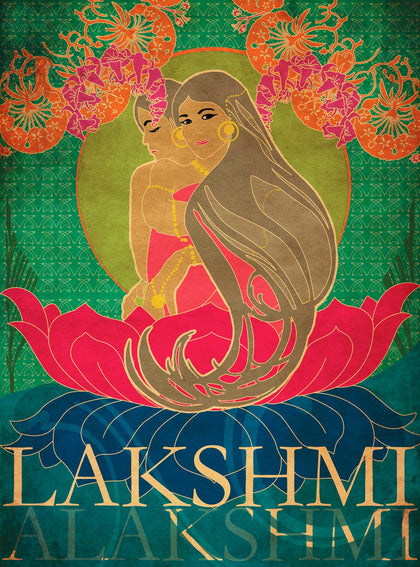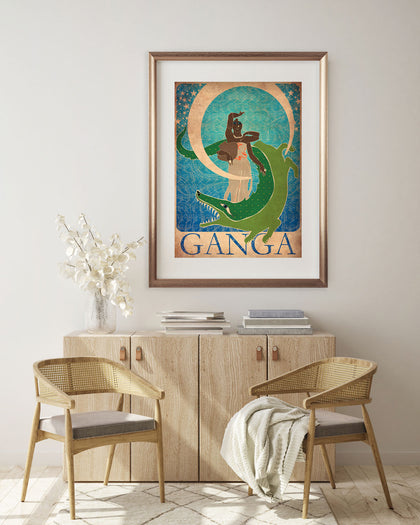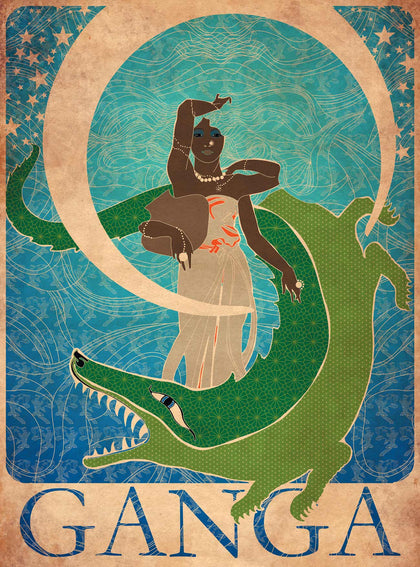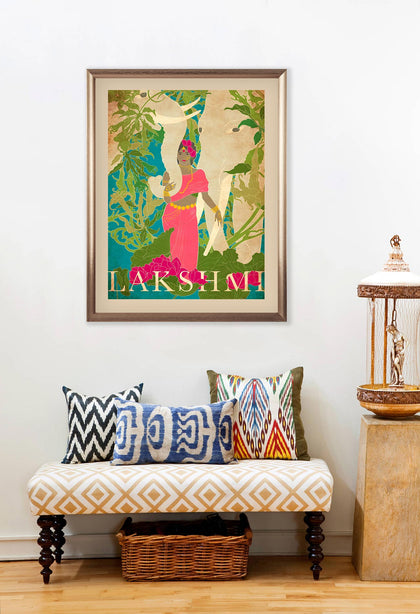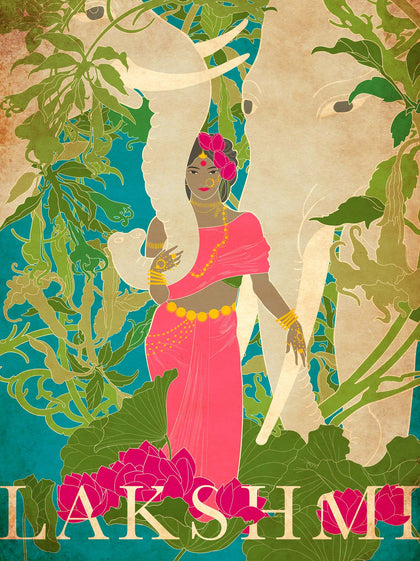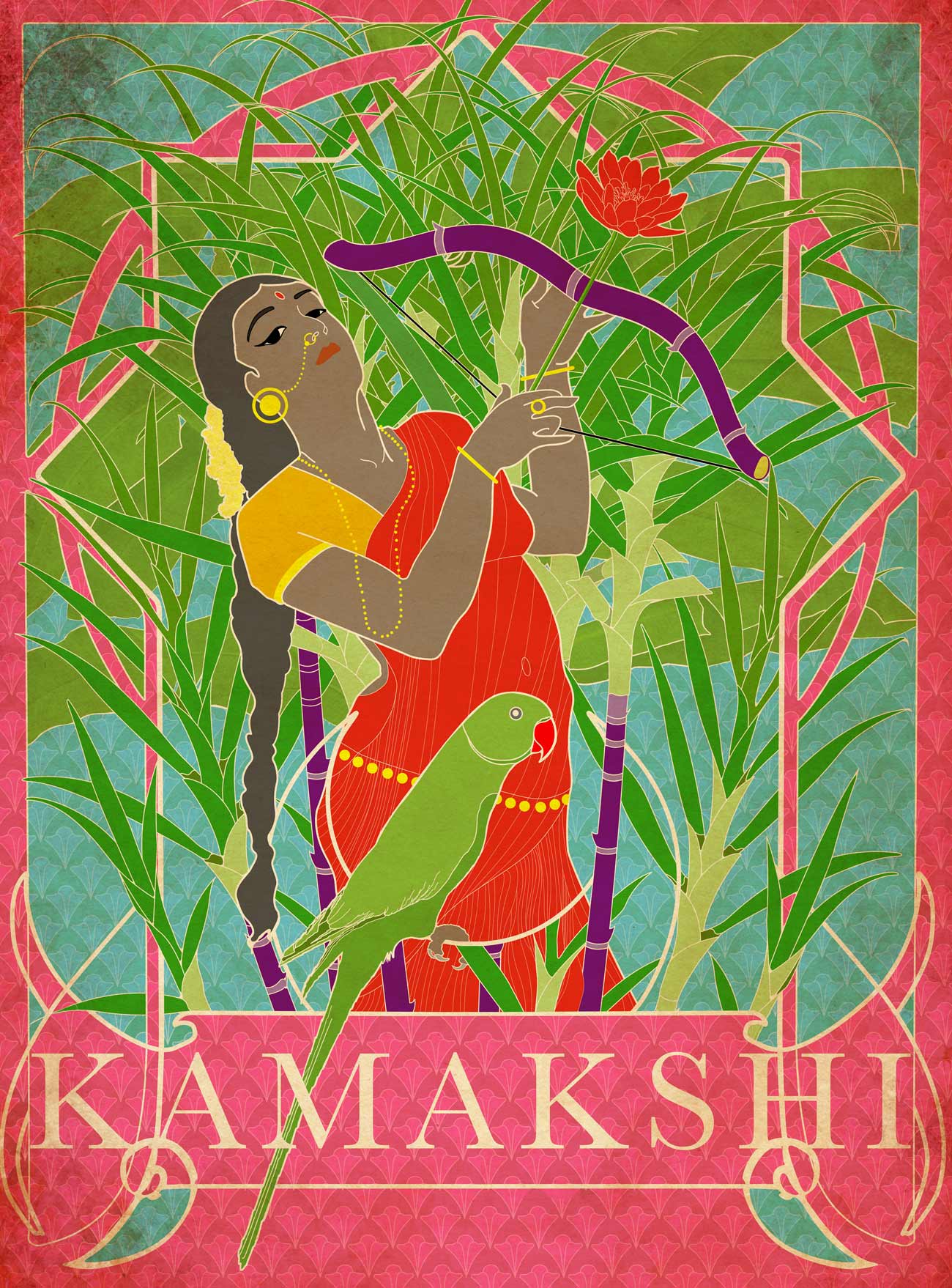Description
Without desire all of creation loses its fragrance and the god of desire himself was enchanting. In Kama’s hands the sugarcane bow and flowered arrows are merely mischievous. And he paid with his life for playing with these wonderful weapons of desire. When he took aim, their effects were limited to passion, a trap that one falls into. In Kamakshi’s hands, desire is expansive. A landscape to walk in, eyes wide open, a choice that feels like destiny. A desire for the world and the pleasure of being part of it.
In sunshine and starlight, laughter and pain it grows, changing how we feel, what we see and the taste of everything we touch. Red is no longer alarming and blood changes meaning. In Draupadi’s hands it is revenge, in Kali’s it is destruction, and in Kamakshi’s, it is life. We are not hunted but adored by the flowered archer. For some she is a fertile womb, a cleft in a rock that bleeds, marking the coming of monsoon. A season for desire, wisdom, and experience - only a life well lived can know.
About the Series:
This artwork is part of the “Sister Misfortune” series, through which the artist, Smruthi Gargi Eswar, narrates lesser-known stories from Indian mythology, while reflecting on the narrative surrounding women in our culture. Various Indian goddesses (devis) are depicted with a refreshing artistic lens.
In India, there is a constant burden on women to be “Devi-like”. Through this series, the artist attempts a reverse deification of the goddesses, making them appear like real women, in a real world. The series is an exploration not just of duality, but of multiplicity. It compels us to question our attitudes - women towards themselves, men towards women. How does the idea of a goddess coexist within every woman? How do we, as a society, so casually dismiss, disrespect, disregard, and defile in our everyday existence, those who we have bedecked with gold and enshrined in a temple?



















































































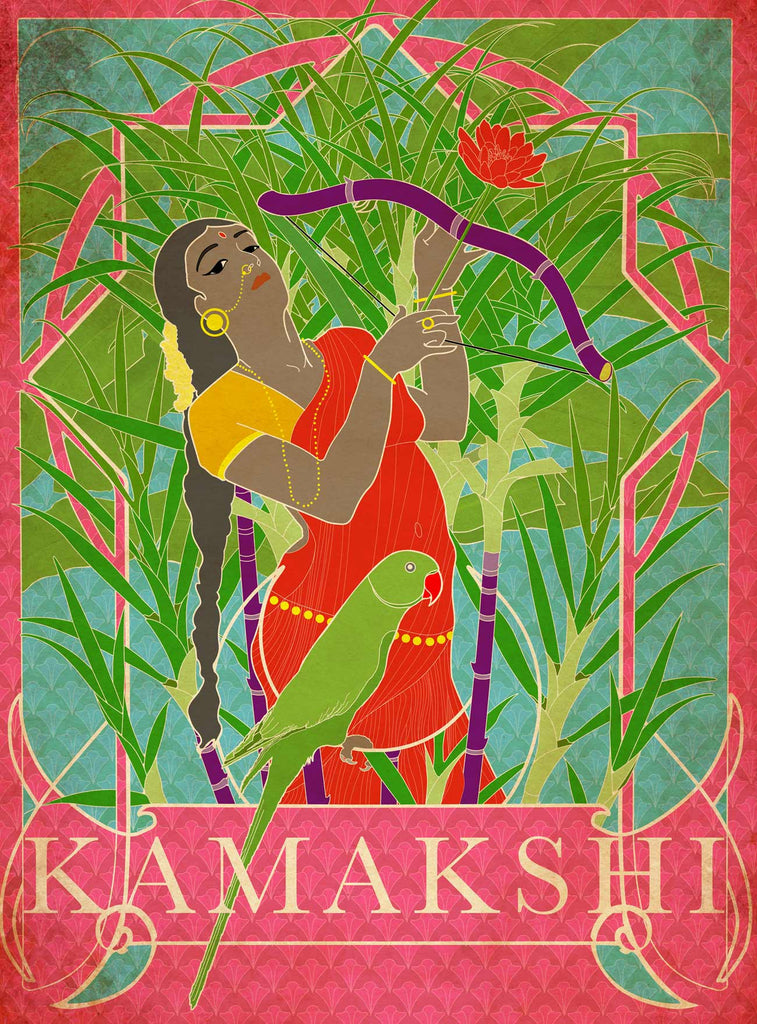
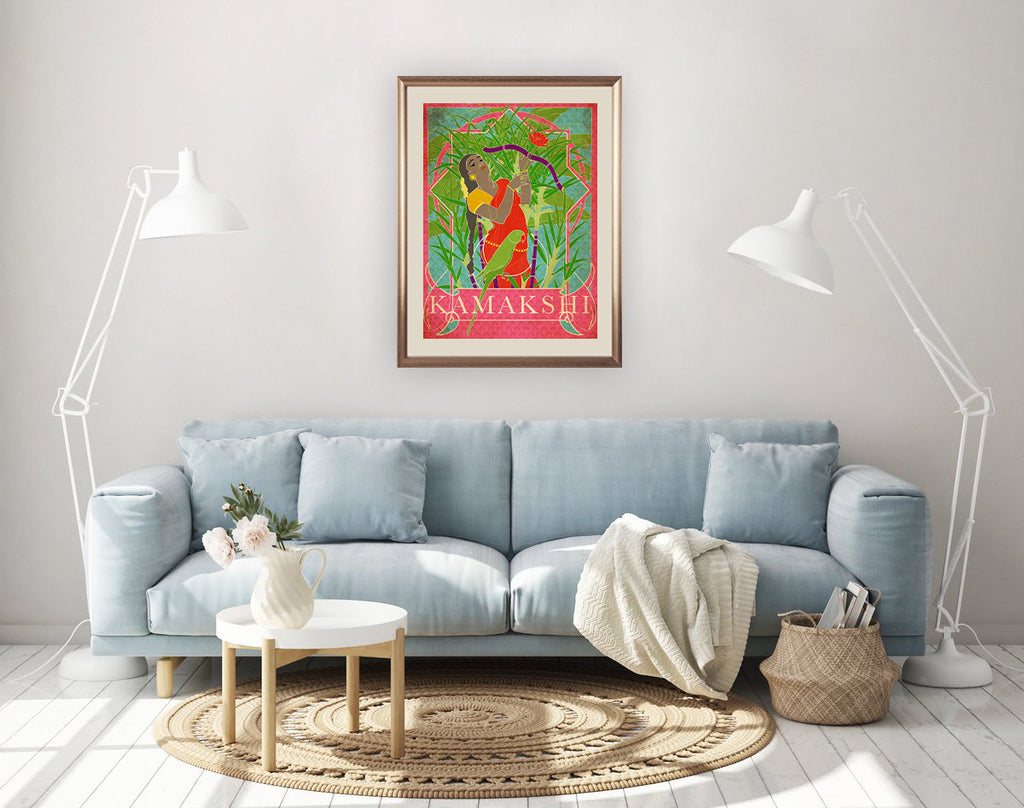
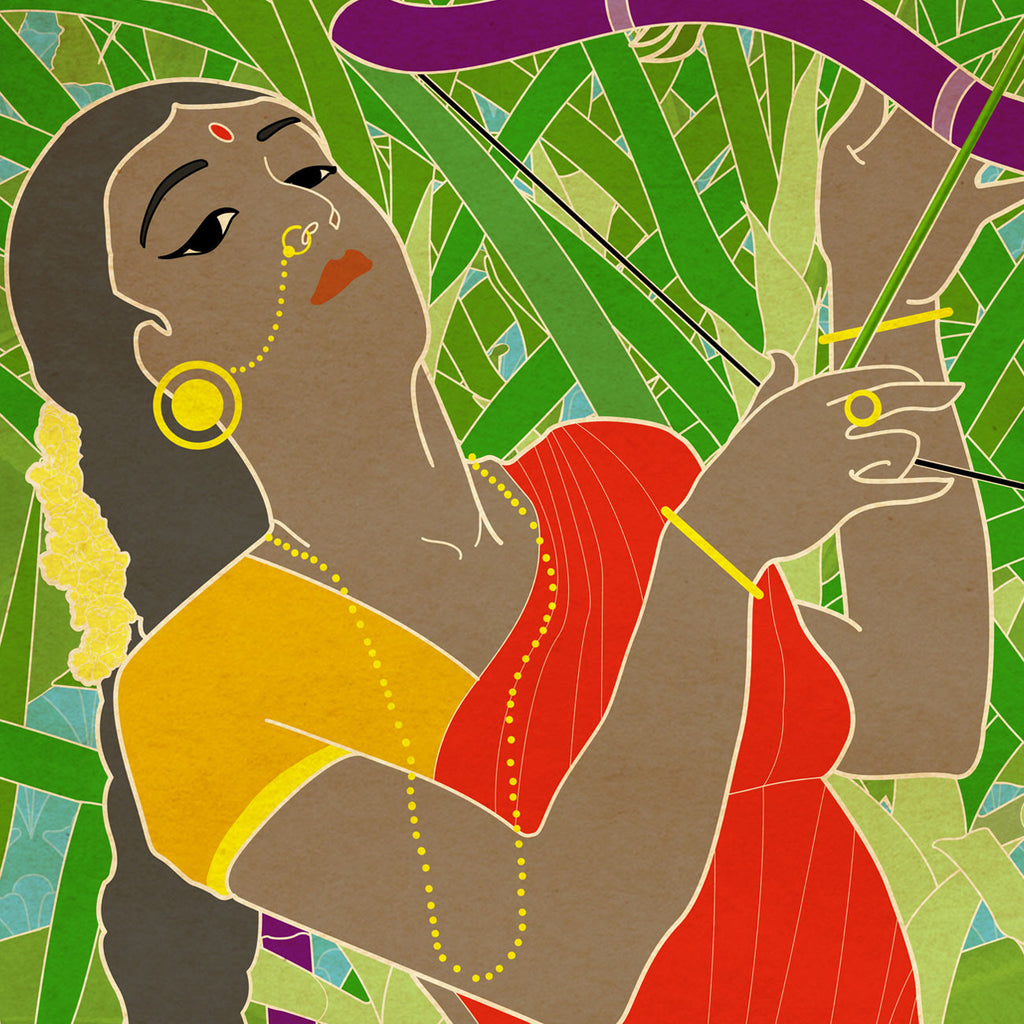
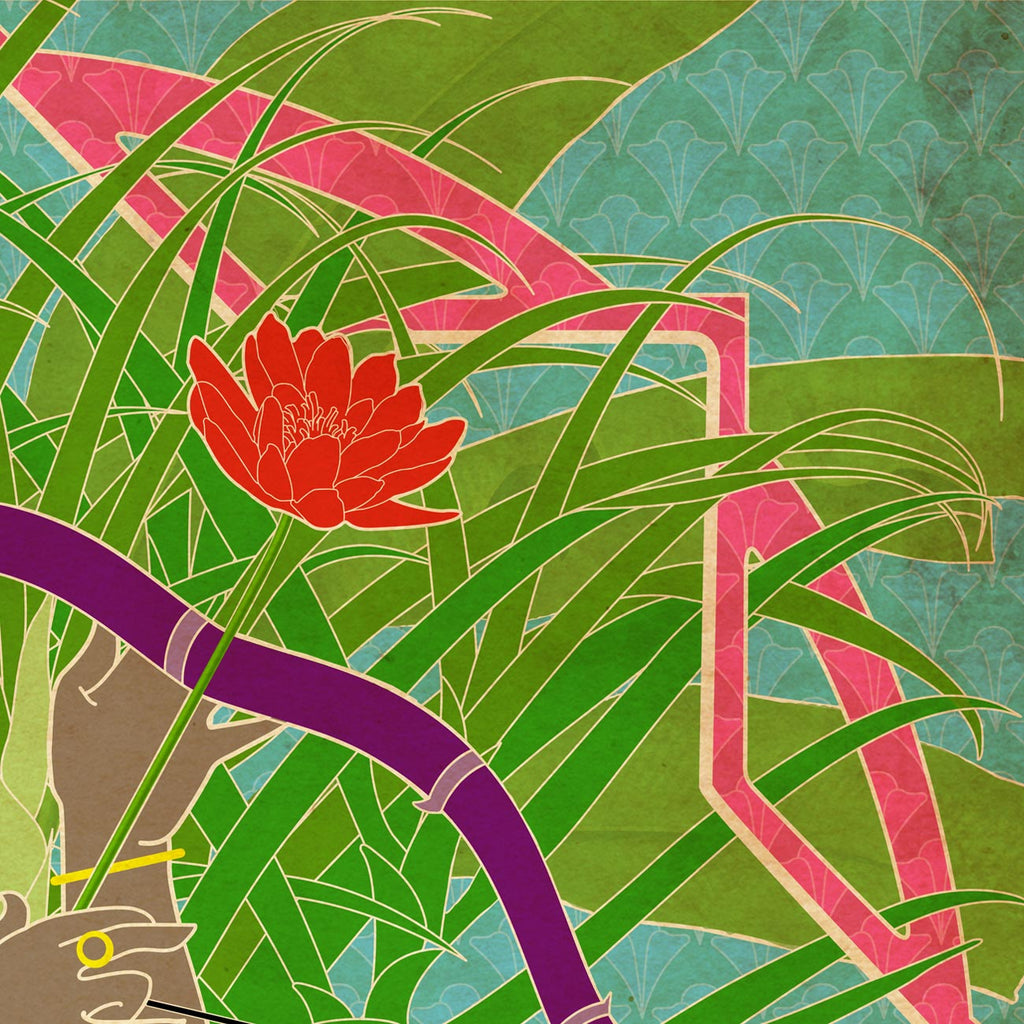
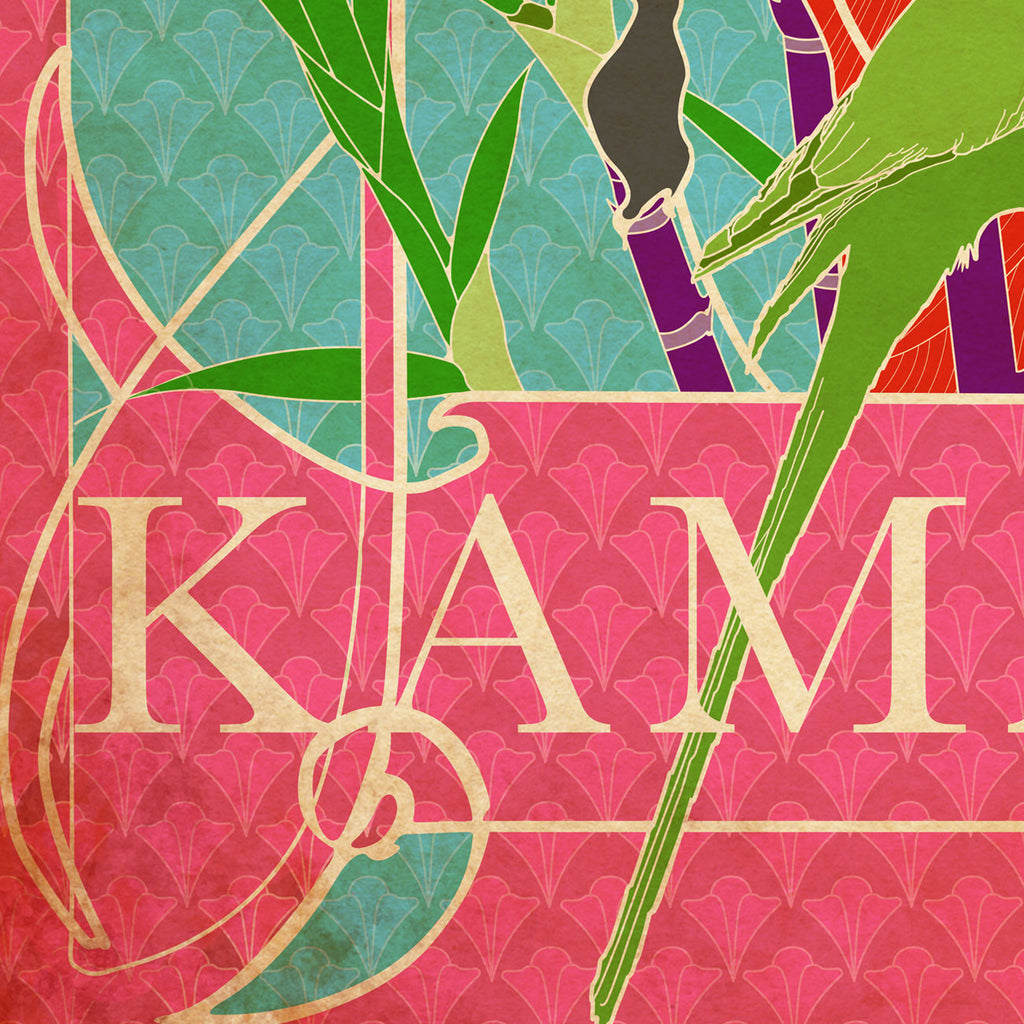
 View Full Screen
View Full Screen


